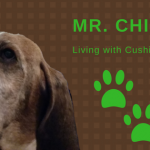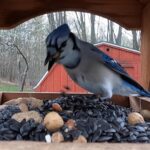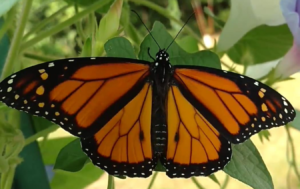For my Feature Friday today I chose the brown headed cowbird. It’s nesting season and with so many more people watching birds and setting up nest cams and the like, lots of folks on the internet are seeing their robin-sized brown speckled eggs showing up in their nests and the Internet is all aflutter with talk of what to do about the cowbird eggs.
The right answer unless you are a specialized, licensed biologist in very specific targeted areas is: NOTHING

There are a few programs here in my great state of Michigan that are designed to help the Kirtland’s Warbler and they strategically trap and otherwise prohibit cowbirds from using the warbler nests. However, if you are a backyard birder like me and you just happen to see a songbird nest with a cowbird egg in it, the right answer is to leave it alone.
There’s a great article from the Audubon Society that goes into great detail about all of the reasons not to tamper with or destroy the cowbird eggs. I highly recommend you read it linked here:
Is it Okay to remove cowbird eggs from nests? Spoiler alert – NO.

“The best solution is to leave cowbirds eggs alone,” says Steve Rothstein, Emeritus Professor of Zoology at the University of California, Santa Barbara, who has researched the effects of cowbird parasitism on endangered species. “It’s a natural process and we shouldn’t attach human values about killing or being sneaky to the natural world.”
The reasons are multifold, and encompass both the law and unintended consequences.
U.S. law already says that people should not interfere with cowbird eggs. As a native species, the Brown-headed Cowbird is protected under the Migratory Bird Treaty Act, and taking eggs is illegal without a permit. While permits for cowbird control are granted, it’s only done when they’re considered a threat to endangered birds. For example, in Michigan, the U.S. Fish and Wildlife Service traps an average of 4,000 cowbirds every year to protect endangered Kirtland’s Warblers
From the Audubon Article by Amy Lewis

We Americans have very bad habits of anthropomorphizing everything, often to the detriment of our native species. Please don’t do that with your backyard birds. I love to feed the birds and watch the birds, but it’s because I love nature. Yes, sometimes a songbird gets eaten by a raptor. Yes, sometimes nesting sites or eggs get raided by other birds. These things are part of the cycle of life and so are the brood parasites like brown headed cowbirds.
Why are cowbirds so hated? Is it because they are sort of dull to look at? Is it because of their close association with the word “parasite”? Is it because our American ethos of “protecting one’s family” seems to side with the host nest and bird’s survival rather than the cowbird’s? I’m not really sure. I think people that are casually interested in bird watching are drawn to the flashy colors of other species perhaps.

So, today, I want you to think about instead of villifying the brown headed cowbird, celebrating it!
Millions of years of evolution have led this bird to have enough ingenuity to use the resources of others to raise its young. Somehow, the juvenile, who is raised up by another species with their own habits and peculiarities and calls, knows all along that it’s a cowbird and how to act like a cowbird and call like a cowbird! It’s easy to be amazed by that! Also, these birds have to be observant and patient and watch where all the other female birds go to build their nests. Then, they have to wait patiently for that bird to leave and offer an opportunity to lay her egg. There’s a genius to them if you think about it. I urge you to trust millions of years of evolutionary success rather than the decades you may have been watching birds and leave nature to do what it does. Don’t disturb the cowbird eggs. It is estimated each female lays up to 40 eggs per season however, only 2 – 3 tend to survive.

Cowbirds are actually very interesting to watch. Depending on their habitat, you may have territorial birds or not. Here in our area, we do have a small group that protects a small territory. You can observe all of their social behaviors out in the open. They do this thing called a bill tilt where they put their neck straight up in the air. Both males and females do this and it is a show of dominance with another bird. You’ll also sometimes see the males do a topple over, sometimes just after the bill tilt. They tip their body forward like they will face plant and their wings come out a bit. They may do this towards females in their little mating ritual or towards other males to say hey, this is my lady.


If you watch the females at your feeder you’ll see them always watching everyone else. They pay very close attention to where everyone is coming and going. Here in forested areas, we see smaller groups of cowbirds than in open areas. They form a small group and compete with one another but also defend a small territory. They tend to stick in pairs in this type of environment and so you can see them paired up but still within their group.
See what behaviors you can observe in this video compilation:
As you can see in these pics, they don’t really bully others or chase other birds off the feeder. They do hang around red winged blackbirds (and frequently use their nests) and those guys can be bullies sometimes. But, generally, I’ve seen the cowbirds getting along with everyone. Their success of course depends on the other birds getting a meal and taking care of the young.
Now, tomorrow, if you decide you don’t want to have cowbirds around your area, what do you do? Here’s something relatively easy to try. Plant trees & shrubs native to your areas around your property. Fill as much of your property with trees and shrubs as you can. Cowbirds thrive in open grasslands. If you create an area that is more woodsy than grassy then that does 2 things. First, it’ll keep cowbirds away as well as other species you may not want to attract like blackbirds, grackles etc. Second, it will create exactly the habitat that other songbirds need to thrive. Deforestation and habitat loss is a MUCH greater threat to songbird success than cowbird eggs are. Leave the cowbird eggs alone and go plant some trees and shrubs. Keep to your native species and songbirds will thrive!
Update 5/6/2021 – As I continue to see SO. MUCH. Hate for cowbirds on the internet, today I was exposed to 2 additional excellent resources for more information about cowbirds and why to celebrate rather than vilify them. Here’s an episode of the American Birding Association Podcast where Sarah Winnicki from the CowBirdLab at the University of Illinois speaks in defense of the cowbird. I’ll embed the player or you can click the link above to go to the podcast page.
From the podcast, I followed the links to Sarah Winnicki’s twitter page where she had a thread from 2019 that dives deep into this subject with many more scientific references. I’m embedding that here as well. Follow Sarah on twitter for more great cowbird content. Click on the words “Powered by Thread Reader App” below to read the entire thread of scientific information. Very interesting!
PS A lot of the things I know about bird behavior comes from the Stokes Nature Guides: A guide to Bird Behavior Volume I, II and III by Donald and Lillian Stokes. I highly recommend adding these books to your collection if you are interested in learning more about bird behavior. There is in depth information on lots of different species. The Brown Headed Cowbird pages are in Volume II and I re-read that chapter along with the article linked above as research for this blog. The names of the behaviors come from this volume. I’m working out of a copy from 1983. I’m not sure if there have been more recent updates.











Here’s some additional information about the US Fish and Wildlife Service Kirtland Wabler program as it relates to the cowbird removal here in the state of Michigan. https://www.fws.gov/midwest/endangered/birds/Kirtland/kiwafctsht.html